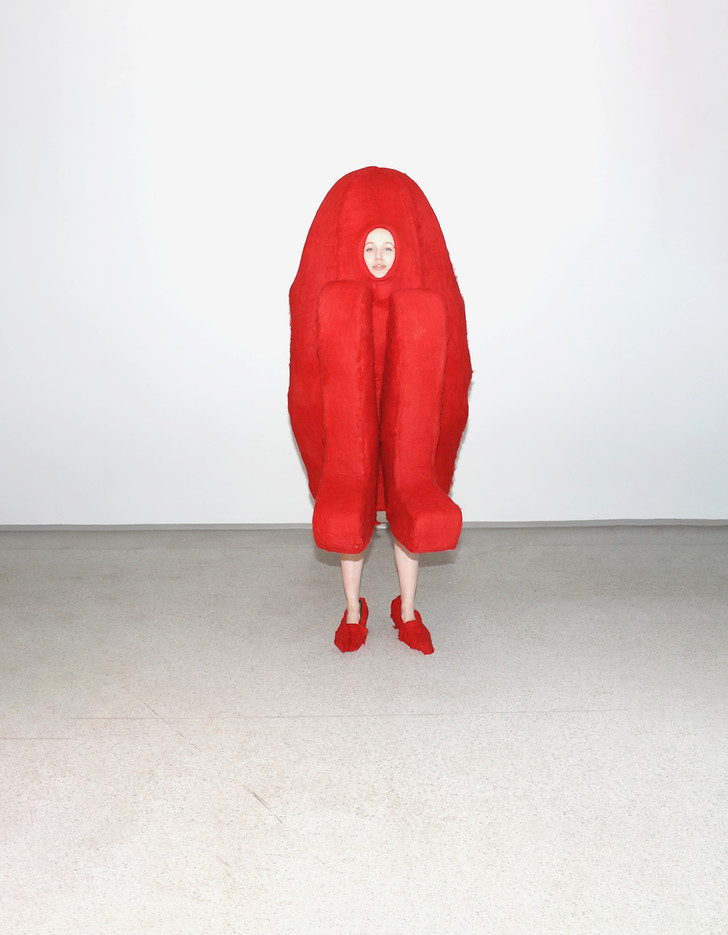sad mascots for the broken people
social performance for the suburbs of tallinn
metal, wool
photos by elo vahtrik
2023
Apathetic mascots are standing still and applauding for the apathetic people. If they are not dead yet, they are still standing and still applauding.
The work deals with our everyday shared space, the norms of belonging and hierarchies that prevail there. Who is allowed to belong, who sets the norms of belonging and who has access to power?
Influenced by the conflicts of the public space, the work also reflects on fashions’ inability to adequately react to the widespread inequality matters and searches for a democratic potential in the public space by observing it as an environment where people perform without performing.
The centre of the work is a mascot as a symbol of happiness and joy. Someone, who unites the masses and cheers them up. Sad mascots for the broken people are the opposite - powerless and limited, they are unable to run or shout. To throw a high-five or make some splits. By distorting and altering bodies, active subjects are now turned into dysfunctional objects in which the encapsulated people are forced to adapt to a contrasting form.
The works were presented on the streets of the suburbs over a fixed time period in the form of still life, not asking anyone to join or interact, giving a possibility to look away or come closer, including the sound as a main communicative tool. The public space, supposedly a democratic space, is not specifically looked upon as an urban space, a criticism of it, rather than a place where people perform without performing - a playground full of potential.
Awards: Young Applied Artist Award from the Estonian Academy of Arts 2023


.jpg)















